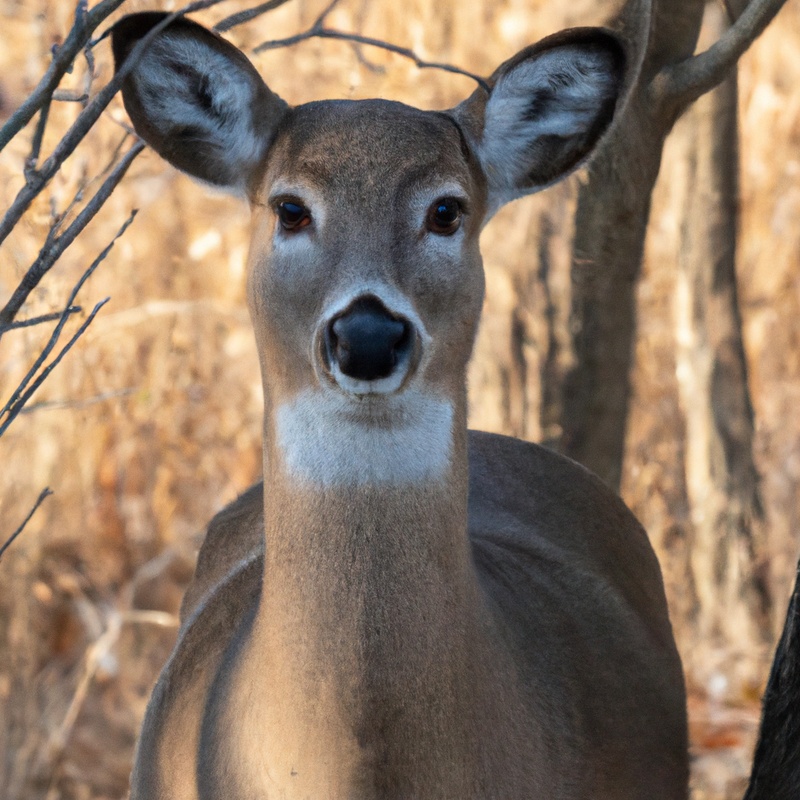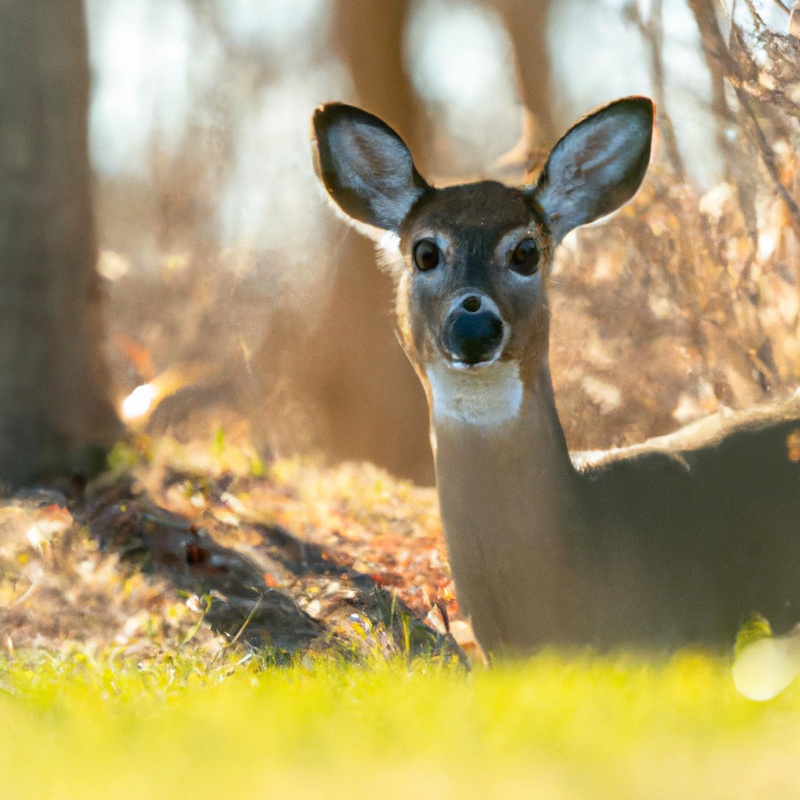Key Takeaways:
- White-tailed deer hunting in Arizona is regulated to maintain sustainable populations and conservation efforts.
- Hunting seasons and regulations for white-tailed deer in Arizona vary based on specific units and regions.
- The state of Arizona offers both archery and rifle hunting opportunities for white-tailed deer.
- Hunters in Arizona must obtain the appropriate licenses and tags to legally hunt white-tailed deer.
Are you ready to embark on an exhilarating hunting adventure in the beautiful wilderness of Arizona? Then get ready to track down the majestic white-tailed deer, a prized trophy for hunters.
As an expert on the subject, I’ll be your guide, sharing everything you need to know about hunting these elusive creatures.
From understanding their native range and habitat preferences to navigating the hunting regulations and seasons, we’ll explore it all. Discover the best tips and techniques for spotting and stalking white-tailed deer, as well as learn how to properly field dress and process your trophy.
So, grab your hunting gear and let’s dive into this exciting journey of hunting white-tailed deer in Arizona.
Aspect | Information |
|---|---|
Species | White-tailed deer (Odocoileus virginianus) |
Hunting Season | August to December |
License and Permits | Valid Arizona hunting license + Deer tag permit |
Hunting Method | Archery, rifle, or muzzleloader |
Bag Limit | One antlered deer per hunting year |
Hunting Areas | Various Game Management Units (GMUs) in Arizona |
Recommended Time | Early morning or late afternoon |
Dress Code | Blaze orange clothing during firearm seasons |
Important Considerations |
|
Overview of White-tailed Deer in Arizona
Native Range and habitat preferences of White-tailed Deer in Arizona
White-tailed deer are native to Arizona and can be found across different parts of the state.
They prefer habitats such as woodlands, forests, and grasslands with good cover and a mixture of open spaces and dense vegetation.
The deer rely on diverse plant species for food and shelter, including grasses, forbs, shrubs, and small trees.
They are adaptable animals and can thrive in various environments, from desert lowlands to mountainous regions.
These preferences for habitat and range help guide hunters when seeking white-tailed deer in Arizona.

Characteristics of White-tailed Deer in Arizona
White-tailed deer in Arizona have distinct characteristics that make them fascinating creatures. They are known for their reddish-brown fur, white underbellies, and white tails that are raised when alarmed.
These deer are agile and can run at incredible speeds, reaching up to 40 miles per hour.
They primarily feed on grass, leaves, and shrubs. During mating season, bucks use their antlers to compete for mates.
Interestingly, white-tailed deer are most active during dawn and dusk, making those times ideal for observing them.

Hunting Regulations and Seasons for White-tailed Deer in Arizona
Bag Limits and Licensing Requirements for White-tailed Deer Hunting in Arizona
To be able to hunt white-tailed deer in Arizona, you must have a valid hunting license and a deer tag.
The hunting license can be obtained online or at a local license dealer.
When it comes to bag limits, each hunter is allowed to harvest one antlered or antlerless deer per calendar year.
However, some areas have specific regulations, so it’s crucial to check the specific game management unit (GMU) guidelines.
Make sure to comply with all licensing requirements and bag limits to ensure a legal and successful hunting experience.
Hunting Seasons and Dates for White-tailed Deer in Arizona
In Arizona, the hunting seasons and dates for white-tailed deer vary depending on the type of weapon used.
For archery and crossbow hunters, the season typically runs from late August to mid-January.
If you prefer to use a firearm, the season usually starts in late October and ends in early December.
It’s important to check the Arizona Game and Fish Department’s website for the specific dates and any restrictions or regulations that may be in place.
Remember to obtain the necessary permits and licenses before heading out on your hunting adventure.

Weapon Restrictions and Hunting Methods for White-tailed Deer in Arizona
In Arizona, there are specific weapon restrictions and hunting methods for white-tailed deer.
When it comes to weapons, you are allowed to use rifles, shotguns, muzzleloaders, and handguns as long as they meet certain requirements.
It’s important to familiarize yourself with these regulations to ensure compliance.
As for hunting methods, spot-and-stalk and tree stand hunting are popular choices for white-tailed deer hunting in Arizona.
Remember to always follow safety guidelines and respect wildlife conservation efforts.
Happy hunting!
Finding hunting locations for White-tailed Deer in Arizona
Wildlife Management Areas for White-tailed Deer Hunting in Arizona
If you’re looking for Wildlife Management Areas (WMAs) for White-tailed Deer hunting in Arizona, you’re in luck. The state has a number of WMAs where you can pursue this game.
Some popular options include Alamo Lake, the Wenima WMA, and the San Bernardino WMA.
These areas have been specifically managed to provide quality hunting opportunities. When planning your trip, be sure to check the Arizona Game and Fish Department’s website for regulations and licensing requirements.
Happy hunting!
Private Land Access for White-tailed Deer Hunting in Arizona
Finding private land access for white-tailed deer hunting in Arizona can be a challenge, but there are a few ways to secure this opportunity. One option is to network with local landowners by attending hunting expos and joining hunting associations.
Another option is to utilize online platforms that connect hunters with landowners who allow access for hunting.
It’s also important to establish a good rapport and communicate respectfully with landowners, demonstrating responsible hunting practices and conservation efforts.
Tips and Techniques for Hunting White-tailed Deer in Arizona
Scouting and Deer Sign Recognition in Arizona
When scouting for white-tailed deer in Arizona, it’s important to look for key signs and recognize them.
One indicator is deer tracks, which can be found on game trails and around feeding areas.
Another clue is rubs and scrapes on trees, left by bucks during the rut.
Look for fresh droppings, as these indicate recent deer activity.
Pay attention to feeding and bedding areas as well.
By learning to recognize these signs, you can increase your chances of locating and hunting white-tailed deer in Arizona.
Happy scouting!
Strategies for Spotting and Stalking White-tailed Deer in Arizona
To effectively spot and stalk white-tailed deer in Arizona, it’s important to adopt a few key strategies. Firstly, move slowly and quietly, as deer have excellent hearing and will easily be spooked.
Secondly, use binoculars or a spotting scope to scan the area for deer, focusing on open meadows and edges of forests.
Thirdly, pay close attention to wind direction to ensure that your scent doesn’t give away your presence. Finally, be patient and observant, as deer are known for their ability to blend into their surroundings.
Happy hunting!
Recommended Hunting Gear for White-tailed Deer in Arizona
When it comes to hunting white-tailed deer in Arizona, there are a few recommended gear items you should consider.
First, a high-quality rifle or bow is essential for making accurate shots.
Opt for a caliber or draw weight that is appropriate for deer hunting.
Next, camouflage clothing and scent control are crucial for staying hidden from deer’s sharp senses.
Additionally, binoculars are a must-have for spotting deer from a distance.
Finally, a sturdy backpack to carry your gear and a comfortable pair of boots for traversing the terrain are important for a successful hunting trip.
To summarize, the recommended hunting gear for white-tailed deer in Arizona includes a reliable rifle or bow, camouflage clothing, scent control products, binoculars, a durable backpack, and comfortable boots.
Field Dressing and Processing White-tailed Deer in Arizona
Proper Field Dressing Techniques for White-tailed Deer in Arizona
Field dressing a white-tailed deer in Arizona requires a few key techniques to ensure that the meat stays fresh and safe for consumption.
Here are some important steps to follow:
- Start by carefully field dressing the deer, removing the organs and entrails to prevent spoilage and gamey flavors.
- Pay close attention to cleanliness and hygiene during the process, as Arizona’s warm climate can promote the growth of bacteria.
- It’s important to cool the deer as quickly as possible, either by packing it with ice or hanging it in a cool, shaded area.
- Consider quartering the deer to make transportation easier, especially if you’re far from your vehicle or hunting camp.
- Finally, be sure to properly process the meat after field dressing, taking care to remove any excess fat, bone, or connective tissue.
Frequently Asked Questions about Hunting White-tailed Deer in Arizona
Can I hunt White-tailed Deer with a bow in Arizona?
Absolutely! Yes, you can hunt White-tailed Deer with a bow in Arizona.
The state allows bow hunting for White-tailed Deer during specific hunting seasons.
You’ll need to make sure you have the required licenses and permits, follow the regulations set by the Arizona Game and Fish Department, and practice responsible and ethical hunting practices.
Always prioritize safety and respect for wildlife when pursuing your hunting passion.
Happy bow hunting in Arizona!
What is the best time of year to hunt White-tailed Deer in Arizona?
The best time to hunt White-tailed Deer in Arizona is during the rut.
The rut, which is the mating season for deer, typically occurs in the months of December and January in Arizona.
During this time, bucks are more active and can be lured in by using calls or scents.
It’s important to note that hunting seasons and regulations may vary by region, so be sure to check with local authorities before planning your hunting trip.
Happy hunting!
What are the most common hunting mistakes to avoid in Arizona?
One of the most common hunting mistakes to avoid in Arizona is not being prepared for the terrain.
Arizona is known for its diverse landscapes, from desert to mountains, so it’s essential to research and understand the area you’ll be hunting in.
Another mistake to avoid is not having the right gear, such as appropriate clothing and equipment for the specific environment.
Additionally, failing to follow all hunting regulations and obtaining the necessary permits and licenses is a common mistake that should be avoided.
Lastly, not practicing proper firearm safety and marksmanship can jeopardize the hunt and pose a danger to yourself and others.
Final Verdict
Hunting White-tailed deer in Arizona offers an exciting and rewarding experience for hunters. With its diverse range of habitats and ample hunting opportunities, Arizona provides a unique setting for pursuing these magnificent animals.
It is essential to familiarize yourself with the native range and habitat preferences of White-tailed deer, as well as the hunting regulations and seasons in Arizona.
By scouting and employing effective strategies, such as spotting and stalking, hunters can increase their chances of a successful hunt. Finally, proper field dressing techniques and meat preservation are crucial for ensuring the quality of the harvested deer.
Overall, hunting White-tailed deer in Arizona requires knowledge, skill, and respect for the wildlife and land, contributing to a fulfilling and memorable hunting experience.








